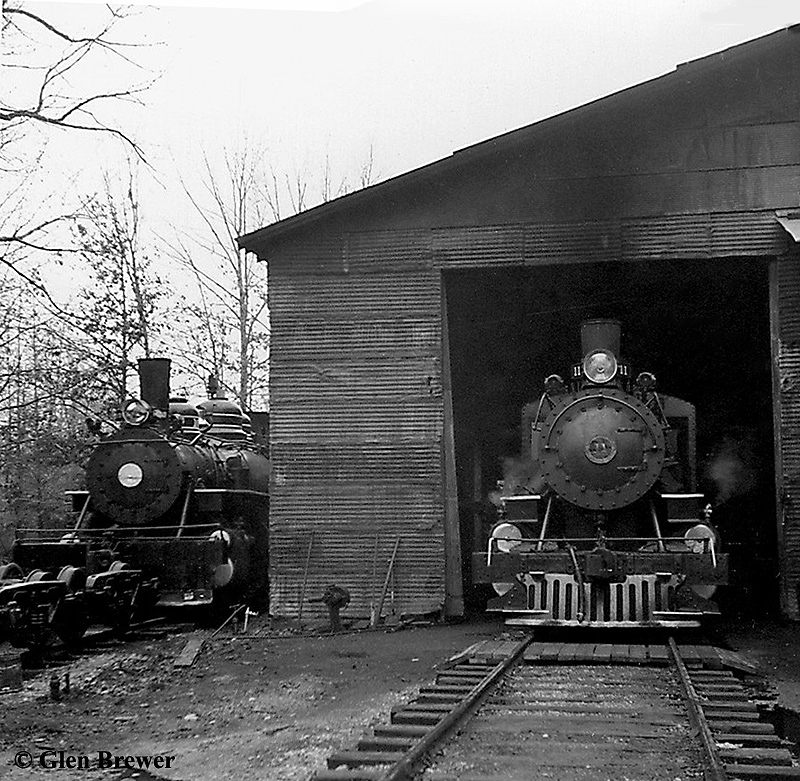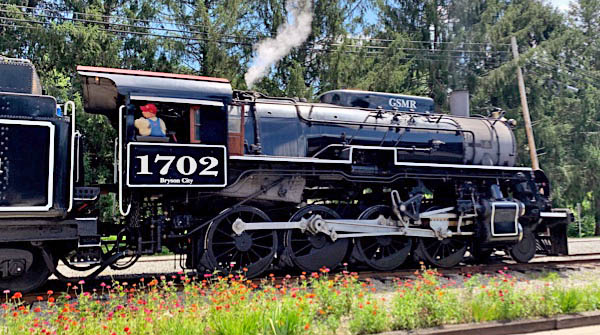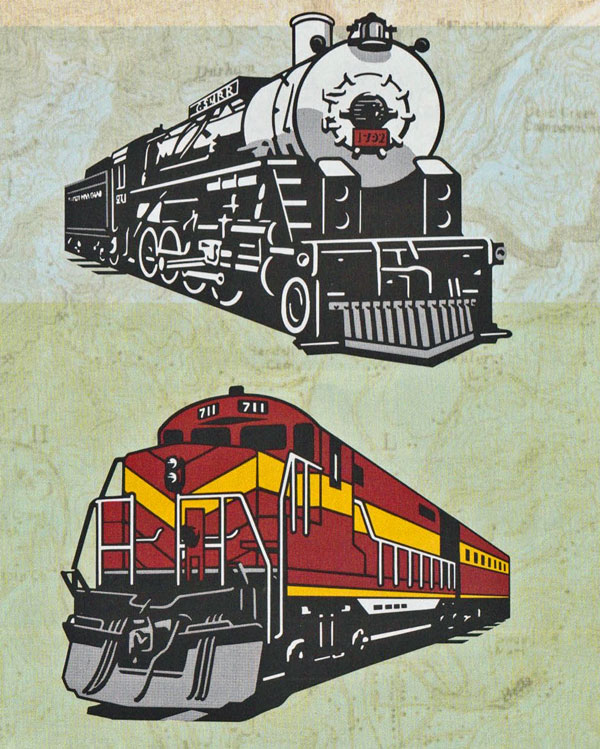

Photographed: Denver, Colo., August 3, 1952. Photographed: Denver, Colo., July 27, 1952. Photographed: near Sedalia, Colo., March 5, 1950. Summary: Train #1, Royal Gorge 7 cars, 50 MPH.

Photographed: south of Littleton, Colo., April 4, 1948. Photographed: Denver, Colo., February 29, 1948. Summary: Train #16, Colorado-New Mexico Express 8 cars, snowy scene. Photographed: near Leyden Junction, Colo., January 14, 1945. Photographed: Wolhurst, Colo., October 3, 1943. Summary: Exposition Flyer detouring via Royal Gorge, due to fire in tunnel 10, on Moffat route, 12 cars. Photographed: near Acequia, Colo., April 27, 1942. Summary: Train #3, passenger 6 cars, 50 MPH. Photographed: near Mitchell, Colo., May 2, 1941. Photographed: south of Littleton, Colo., May 19, 1940. Photographed: near Wolhurst, Colo., November 27, 1939. Summary: Freight, westbound 102 cars, 30 MPH. Title: D&RGW train, engine number 1700, engine type 4-8-4 and engine number 1513, engine type 4-8-2 Photographed: north of Littleton, Colo., May 7, 1939. Summary: Train #16, Colorado-New Mexico Express 9 cars, 35 MPH. Photographed: South of Littleton, Colo., February 12, 1939. Photographed: south of Littleton, Colo., December 5, 1938. Summary: Freight, westbound 54 cars, 30 MPH. Photographed: Denver, Colo., December 26, 1937. Summary: Train #16, Colorado-New Mexico Express 13 cars, 20 MPH, good smoke effect. Photographed: Denver, Colo., July 12, 1937.

Summary: Train #15, Colorado-New Mexico Express, Union Station. Photographed: Pueblo, Colo., April 4, 1937. Summary: Train #1, Scenic Ltd., Union Station 10 cars. Photographed: Denver, Colo., March 20, 1937. Summary: Train #16, Colorado-New Mexico Express 9 cars, 30 MPH. Photographed: south of Littleton, Colo., August 23, 1936. Photographed: near Littleton, Colo., May 10, 1936. Photographed: near Littleton, Colo., October 13, 1935. Summary: Train #16, Colorado-New Mexico Express 10 cars, 38 MPH. Photographed: near Ortega, Colo., September 2, 1934. Photographed: near Littleton, Colo., September 18, 1932. Summary: Train #3, The Westerner 10 cars, 50 MPH. Photographed: leaving Palmer Lake, Colo., September 18, 1932. Summary: Freight, eastbound 34 cars, 15 MPH. Photographed: near Littleton, Colo., June 26, 1932. Summary: Train #16, Colorado-New Mexico Express 10 cars, 45 MPH. Photographed: near Littleton, Colo., April 26, 1931. Photographed: near Palmer Lake, Colo., July 14, 1929. Photographed: Denver, Colo., April 14, 1929. Title: D&RGW train, engine number 1700, engine type 4-8-4 Men pose one is in the cab, the other is by the steps. Summary: Denver and Rio Grande Western Railroad locomotive 1700 is at Burnham Shops, Denver, Colorado. Title: D&RGW 1700, 4-8-4, at Burnham Shops, Denver, Colo, when new Geo.
#READER RAILROAD 1702 CAB FULL#
Cabooses were used on every freight train until the 1980s, when safety laws requiring the presence of cabooses and full crews were relaxed.Denver Public Library Images of D&RGW M-64 Class Steam Engines These functioned in a similar role to cabooses, while also providing additional braking systems for trains not fitted with a continuous braking system, and keeping chain couplings taut. A similar railroad car design, the brake van, was used on British and Commonwealth railways. The car also served as the conductor's office, and on long routes, included accommodation and cooking facilities. Designs were originally modified box cars or flatbed cars carrying a cabin, but later became specialised vehicles, with projections above or to the sides of the car so crew could observe the train from shelter.

Cabooses provided shelter for crew at the end of a train, who were required for switching and shunting, and to keep a lookout for load shifting, damage to equipment and cargo, or overheating axles. Caboose A caboose is a manned North American rail transport vehicle coupled at the end of a freight train.


 0 kommentar(er)
0 kommentar(er)
